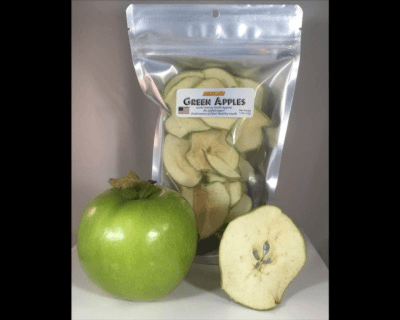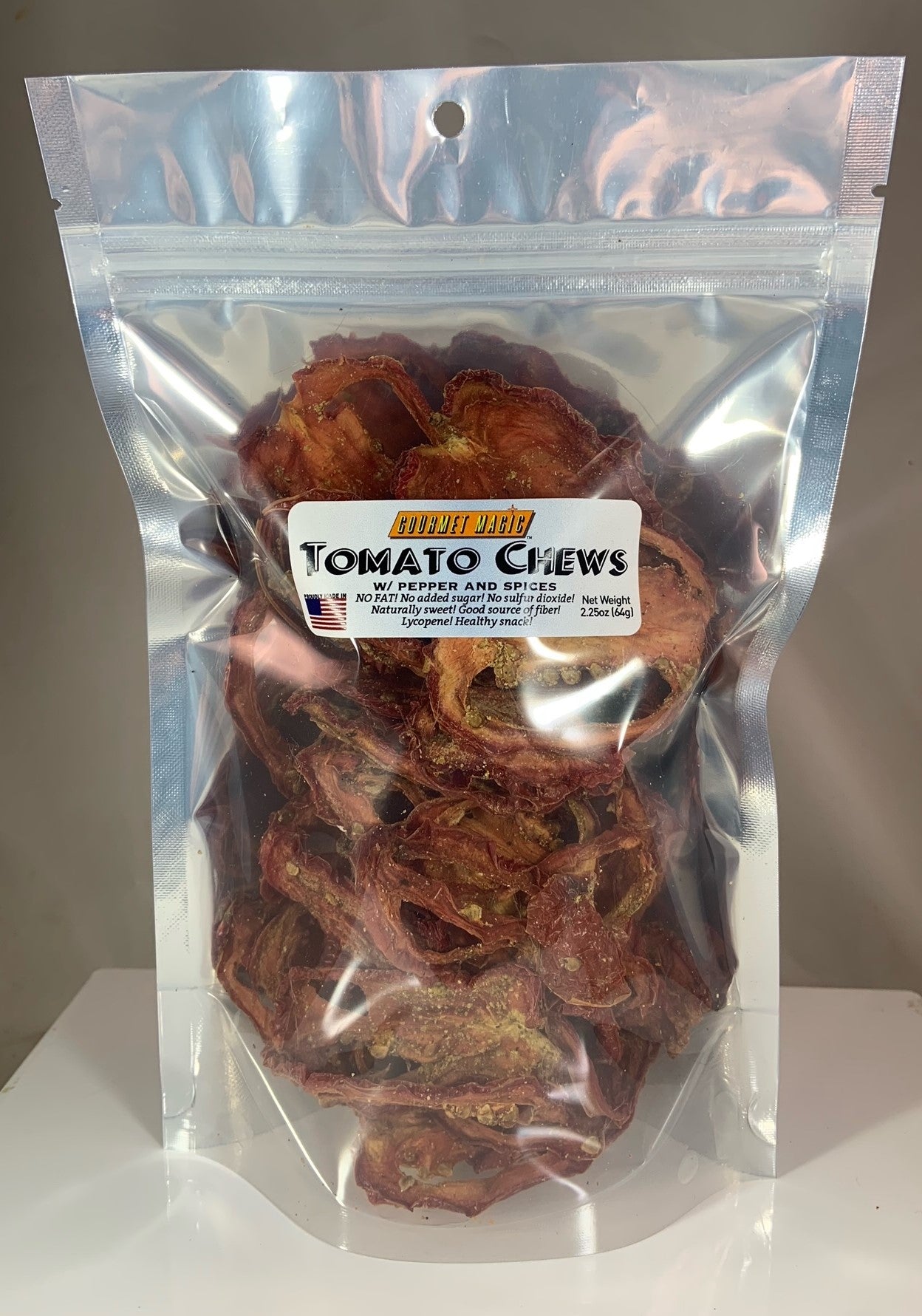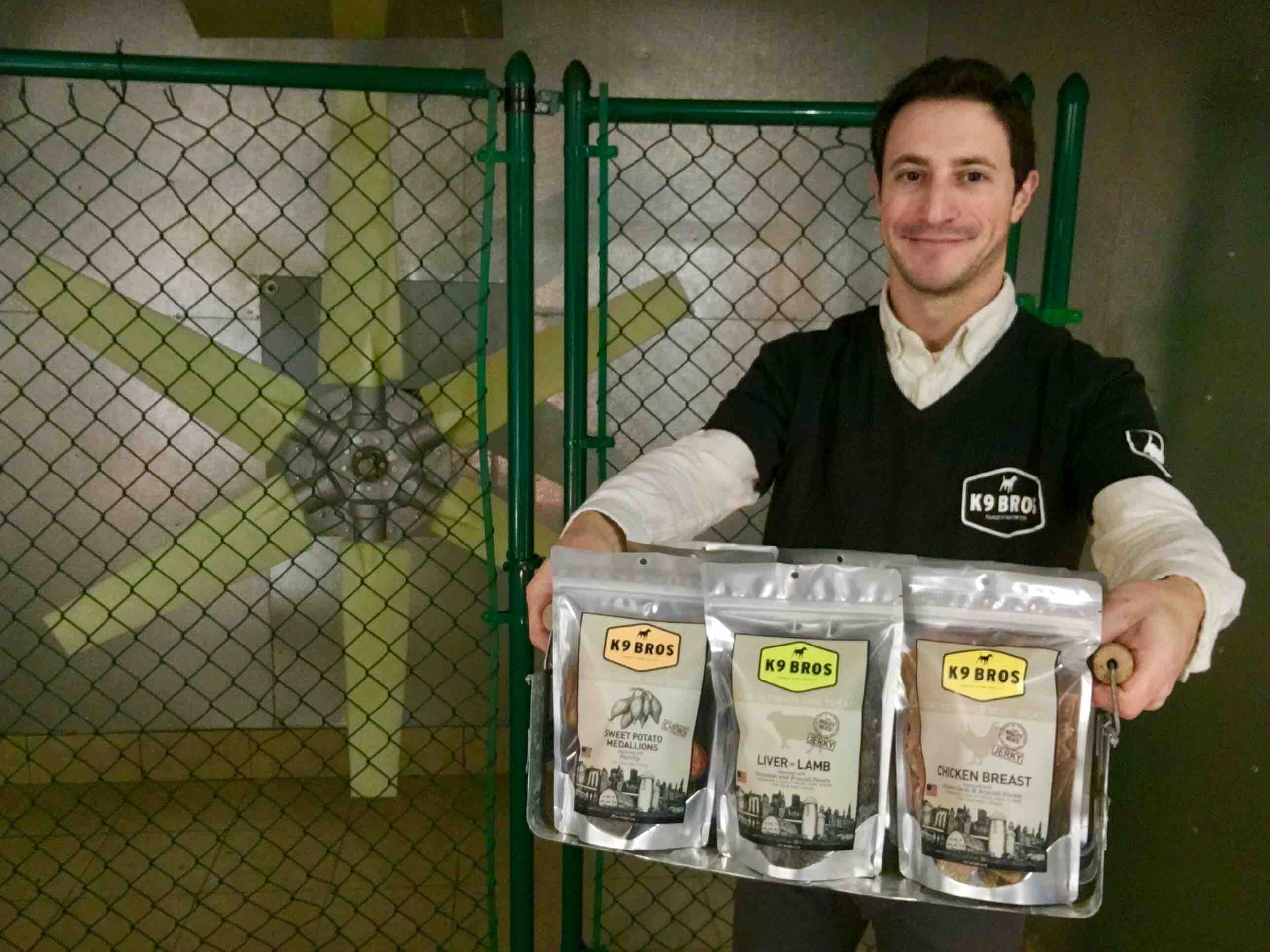#1: What's new? Part 1:
All flavors of Vegetable & Mushroom Jerky this weekend!

I didn't have all my flavors with me fully packaged, but now I do! (I got hung up on designing new labels, selecting font colors and so on, which led to updating my logo... well, it's done... for now!)
Five Flavors:
(1) Original jerky seasoning!
(2) Teriyaki!
(3) Barbeque!
4) Peanut Curry! (totally new)
5) Wasabi! (totally new)
See me this weekend for a free taste-test! I'd love your feedback!
"BE healthy! Eat your veggies!"
[FYI, this jerky is for people! Not doggies... just to be clear, since, sorry doggies, there's a lot of spices like black pepper and soy sauce, intended for people.]
Why vegetable jerky? And why not beef jerky?
(1) "EAT YOUR VEGGIES": I've been on a mission to make healthy foods and have been interested in making an appetizing HEALTHY vegetable snack (not a fried, fiberless, nutrient-devoid potato chip) ever since college! In 1999, I made a nutrition bar using freeze dried vegetables, but I had limited knowledge at the time, and it tasted terrible!
(2) Beef jerky is too easy to overeat and gorge yourself. "Meat sweats": I especially feel meat-sweats when eating beef jerky, I believe meat sweats is due to the nitrates in the beef jerky, which causes blood vessels to dilate (that can't be good.) Nitrates give me insomnia, too. I find beef jerky to be not very filling. I can eat the entire bag in 5 minutes and still feel hungry, even after drinking water, whereas my vegetable jerky is very filling after just a couple pieces! I believe my jerky will help people lose weight!
(3) Mushrooms are a good source of protein, fiber, and veggies, which are high in antioxidants and fiber, and low in calories. There's innumerable research about the benefit of vegetables. Tomatoes are high in lycopene, eggplant is high in minerals and fiber, and eggplant may help reduce the risk of heart disease, and zucchini has vitamins, minerals, and even lutein and zeaxanthin which are important for eye-health.
(4) Sustainability: beef production is a nefarious emitter of CO2 and methane greenhouse gases.
(5) I focus on USA grown vegetables which mainly grow locally in the northeast.
#2. When to see moi next?
Answer: This weekend!
Bring yourself and your pup down for free samples! Both locations are dog-friendly!
On Saturday at Public Lands/Dick's Sporting Goods, there are a variety of cool skis and snowboards. There are deals throughout the store, as well as clearance options all over the huge store! It's a fun place to roam and check out the newest gear, and get inspired to do activities outside! Or get some NFL merch before the big game!
Sunday, there's going to be a lot of vendors at the Huntington Indoor Market, so stock up on some locally made snacks for the Superbowl!
|
Day 1: Saturday |
Day 2: Sunday |
|
| This weekend! |
2 Melville Rd. N. Spirit of Huntington Art Center Mar 10th, 2024 |
|
|
April 20th, noon to 5pm |
April 21st |
|
FREE FLAG FRAME!

No purchase necessary! Come down the farmers market to pick one up! First come, first serve! Thank you for your service!
Also, with purchase of my Bubble-Science toy, you'll receive a NEW Smurfs children's book or Little Mermaid coloring book!

3. Deals!
Subscription direct to your door!
If you can’t come to my products, make my products come to you!
Subscribe and Save! 5% off and free shipping on qualifying orders!
Shameless plugs:
Fresh dried fruit is a weight loss cure!
(this statement that has not been substantiated by any scientific study... but no sugar added dried apples and pears can't be bad!)
No sugar added! Slow and low temperature dehydrated to preserve vitamins, antioxidants, and flavors!
(compare to other brands' apple chips which are high-temperature baked or fried in oil! Yuck!)
USA Grown fruit! Carefully dehydrated!
And the only spreadable black garlic!

2) Red Apples with cinnamon-spice!
3) Green Apples!
4) Green Apples with cinnamon spice!
5) PEARS! (limited stock!)
6) BLACK GARLIC (the only spreadable, more versatile, black garlic!)
7) Vegetable Jerky! (FIVE TOTAL FLAVORS!)
8) Tomato Chews!
K9 BROS TREATS! All natural! Arrrf!

1) Chicken: Whole meat! (no beak nor feather by-products!)
2) Liver of Beef
3) Heart of Beef
4) Sweet Potato
5) Salmon (limited stock)
BUBBLE SCIENCE! (free book included!)


Conclusion:
Hypothesis: I will see you this Saturday or Sunday! 😃
Null hypothesis: I will not see you this weekend 😭
Conclusion: Not sure! Let's see!
Secret website coupon! 10% off with coupon code "grand opening" and "black garlic"
20% off black garlic if you order a dozen units with coupon code "Dozen"
![]()
★ k9bros.com ★
☆ gourmet-magic ☆
★ bubble-science ★
FOOD SCIENCE in FOCUS this newsletter: SHELF LIFE DATES and SHELF LIFE ESTIMATION!
Disclaimer: I asked chat-gpt for answers! It did a better job than I could. I added some thoughts at the end. (Is this cheating?) Anyway, I think it's answers are very thorough. It's all about asking/feeding it good questions, so I hope you find this interesting!
What's the difference between food "best by date", "expiration date", and "sell by date"?
The "best by date," "expiration date," and "sell by date" are terms commonly found on food packaging, and they convey different meanings related to the quality and safety of the product. Here's a breakdown of their meanings:
-
Best By Date:
-
Meaning: This date indicates the period during which the product is expected to be at its best quality in terms of flavor, texture, and nutritional value. It is not a safety-related date but rather a suggestion by the manufacturer for when the product is likely to be at its peak quality.
-
Action: It is generally safe to consume the product after the "best by" date, but the quality may have started to decline. Use your judgment, and if the food looks, smells, and tastes normal, it is likely still safe to eat.
-
-
Expiration Date:
-
Meaning: The expiration date is a more definite deadline set by the manufacturer to indicate the date by which the product should be consumed for safety reasons. Beyond this date, there may be a higher risk of the product no longer being safe to eat.
-
Action: It's generally advisable not to consume products after their expiration dates, as there could be a risk of spoilage or bacterial growth that could lead to foodborne illness.
-
-
Sell By Date:
-
Meaning: The "sell by" date is intended for retailers, indicating the date by which the product should be sold to ensure that consumers have enough time to use it before the quality begins to decline. It is not a safety-related date.
-
Action: Consumers can still purchase and consume products after the "sell by" date if the product has been stored properly. It's essential to pay attention to the "best by" or "expiration" dates for guidance on quality and safety.
-
It's important to note that these dates are not standardized across all products or regions, and different countries or manufacturers may use slightly different terms or have varying regulations. Additionally, proper storage conditions (temperature, humidity, etc.) play a crucial role in the shelf life of a product. Always use your senses and judgment when determining the freshness and safety of food.
How are dates such as "best by date", "expiration date", and "sell by date" determined by food manufacturers?
The dates on food packaging, including "best by date," "expiration date," and "sell by date," are determined by food manufacturers through a combination of factors, including quality control tests, product formulation, and regulatory guidelines. Here are some key aspects that influence the determination of these dates:
1. **Product Testing:**
- Manufacturers conduct extensive testing on their products to assess factors such as flavor, texture, color, and nutritional content over time. This helps them establish a date that represents when the product is expected to be at its peak quality.
2. **Product Formulation:**
- The composition of the food product, including ingredients, preservatives, and packaging materials, plays a role in determining its shelf life. Manufacturers take into account how these factors interact and affect the product's stability over time.
3. **Microbiological and Safety Considerations:**
- For products with safety concerns, such as perishable goods or those prone to bacterial growth, manufacturers may conduct microbiological testing to establish a safe consumption window. The expiration date is often set to ensure that consumers do not consume the product after the safety of the food may be compromised.
4. **Regulatory Guidelines:**
- Food safety regulations and guidelines set by government agencies often influence the determination of these dates. Manufacturers must adhere to these regulations to ensure that their products are safe for consumption and accurately labeled.
5. **Environmental Factors:**
- Storage conditions, including temperature, humidity, and exposure to light, can impact the quality and safety of a product. Manufacturers consider these factors when determining the recommended dates and provide storage instructions on the packaging.
6. **Consumer Expectations:**
- Meeting consumer expectations for freshness and quality is crucial for maintaining brand reputation. Manufacturers aim to set dates that align with consumer preferences and perceptions of when a product is considered fresh.
It's important to note that there is no universal standard for date labeling, and practices may vary between countries and manufacturers. Some countries have regulations that specify how date labels should be used, while others rely on industry standards. Consumers are encouraged to familiarize themselves with the specific meanings of date labels in their region and to use their judgment in conjunction with the provided information.
How is accelerated shelf life testing done?
Accelerated shelf life testing (ASLT) is a process used by food manufacturers to estimate the shelf life of a product in a shorter period than it would take under normal storage conditions. This testing helps manufacturers predict how a product will age and deteriorate over time, allowing them to determine expiration dates and ensure product quality. Here's a general overview of how accelerated shelf life testing is typically conducted:
1. **Selection of Test Conditions:**
- Identify the key environmental factors that influence the shelf life of the product. Common factors include temperature, humidity, light exposure, and oxygen levels.
- Determine the range of conditions that the product is likely to encounter during its life cycle.
2. **Setting Acceleration Factors:**
- Acceleration factors are mathematical adjustments applied to the testing conditions to simulate an extended period of aging in a shorter timeframe.
- Common acceleration factors include Arrhenius equation, which relates the rate of chemical reactions to temperature, and other models based on the product's characteristics.
3. **Sample Preparation:**
- Prepare a representative sample of the product in the same packaging and container that will be used for retail sale.
- Ensure that the samples are stored in a way that allows exposure to the selected test conditions.
4. **Exposure to Test Conditions:**
- Place the samples in environmental chambers or controlled conditions that replicate the chosen factors, such as elevated temperatures.
- Monitor and control the conditions throughout the testing period to maintain consistency.
5. **Sampling and Analysis:**
- Regularly remove samples from the testing environment to assess their quality and characteristics.
- Conduct various tests, including sensory evaluations, chemical analyses, and microbiological assessments, to determine changes in the product over time.
6. **Data Analysis:**
- Collect and analyze data on the changes observed in the product samples.
- Use statistical methods to extrapolate the data and estimate the shelf life of the product under normal storage conditions.
7. **Validation:**
- Validate the results by comparing them with real-time shelf life data and consumer feedback when applicable.
- Adjust the estimated shelf life based on the validation results.
Accelerated shelf life testing is a valuable tool for manufacturers to quickly assess the stability and quality of a product. However, it's important to note that the results are estimations, and the testing conditions may not perfectly replicate real-world scenarios. Manufacturers often use a combination of accelerated testing and real-time testing to gain a more comprehensive understanding of a product's shelf life.
I (David F the food scientist, not the AI chatbot/internet webcrawler-aggregator) add:
The final step above: validation, is key to adjusting the parameters, especially selection of the elevated temperature of the test. The food is being stored intentionally improperly (at the elevated temperature) with the hope that perhaps chemical changes due to elevated temperatures, but especially the elevated humidity and water activity will simulate a more rapid change/deterioration in about 3 weeks rather than months or even years.
From my experience in dehydration of my dried fruit vegetables, and meats: uniform temperature control of the test conditions is essential, so the testing chamber must be big enough not to have any “hot spots,” since small changes in temperature cause significant increases in relative humidity and water-activity of the food: greatly skewing and accelerating the deterioration of the food. (There is a non-linear (exponential) relationship between temperature and relative humidity. See my previous newsletter Part ONE and Part TWO.)
Samples in the container might be hotter than others, completely invalidating the results and render the study useless. A well designed chamber for accelerated shelf-life testing is one with perfect temperature uniformity.
For this reason (that accelerated shelf life testing is very difficult to achieve reliable results), it’s standard practice for manufacturers to save samples from batches and keep in controlled, cool storage condition, sealed in their packaging, similar to as the food would be on the shelf of a retailer.
As far as appearance goes, I have seen not just sunlight (which has harmful UV rays) cause some foods to receive surface oxidation, but even store lighting that uses halide-bulbs, which put out UV light. (“Warm lights” labeled as “2700K” are likely gentler on food surfaces and the natural color, when the food is displayed with clear packaging, whereas "5000K" may put out more UV light.)
Most independent testing labs offer the service of conducting accelerated shelf life testing, and one advantage is it might include an “aerobic plate count”, which is nice to know how many microscopic critters are growing as this can be an indicator of microbial spoilage.
Anyway, every food has a shelf-life story…. this is just a tiny overview.
Food for thought! Now have some real food!
Cheers!
-Dave
"Greatest Hits" of Dave's Focus on Food Science:
1. Deep Dive: Black Garlic Research Links I've accumulated
2. Garlic Health Benefits
3. "Is black garlic fermented?"
4. Black Garlic Caramelization Chemistry
5. Maillard Reaction
6. Pasteurization, Methanol toxicity in Diet Soda and Alcoholic Spirits
7. I created a FUN FOOD SCIENCE 101 POSTER
8. MICROWAVES!
9. Food Chemistry of a HANGOVER!
10. Food Dehydration teaches us about climate change: Part ONE and Part TWO
11. Vinegar is a DOUBLE fermentation
12. Salt Preservation
13. The Saponification Reaction
14. Food Chemistry BOND ENTHALPY
15. FREEZE DRYING
16. Halloween themed "food chemical SCARIES"
17. Hydrocolloids (Gels)
All previous newsletters, click here.png) Click here to unsubscribe
Click here to unsubscribe






